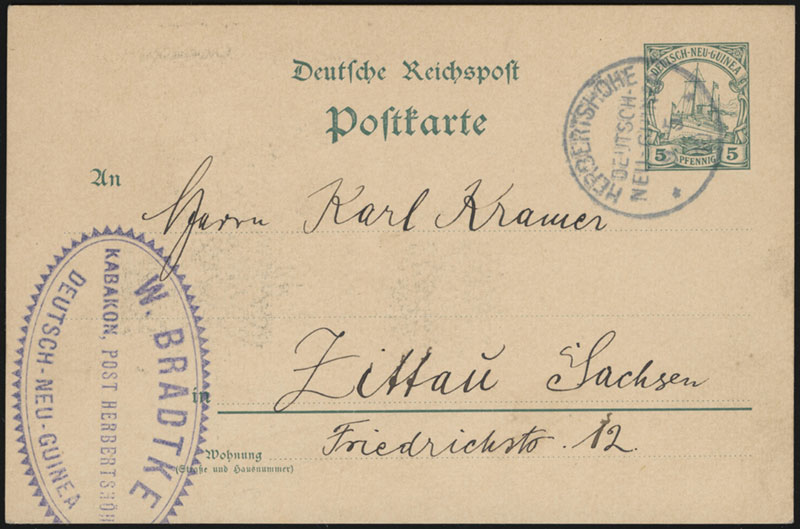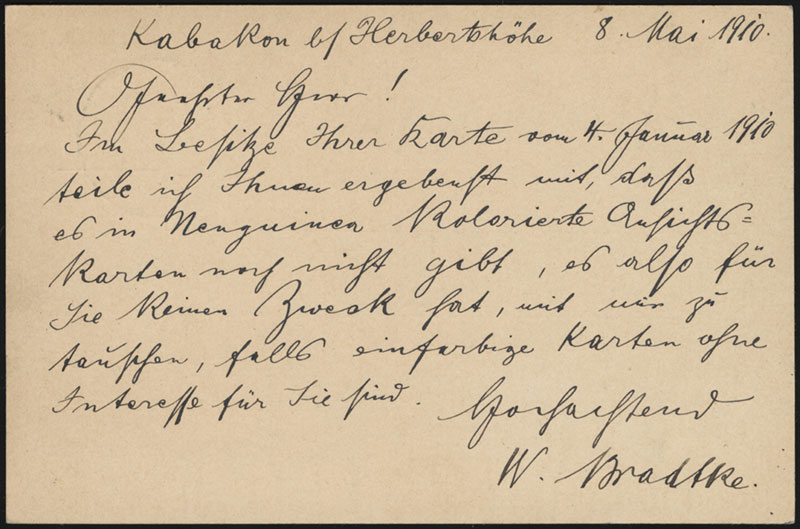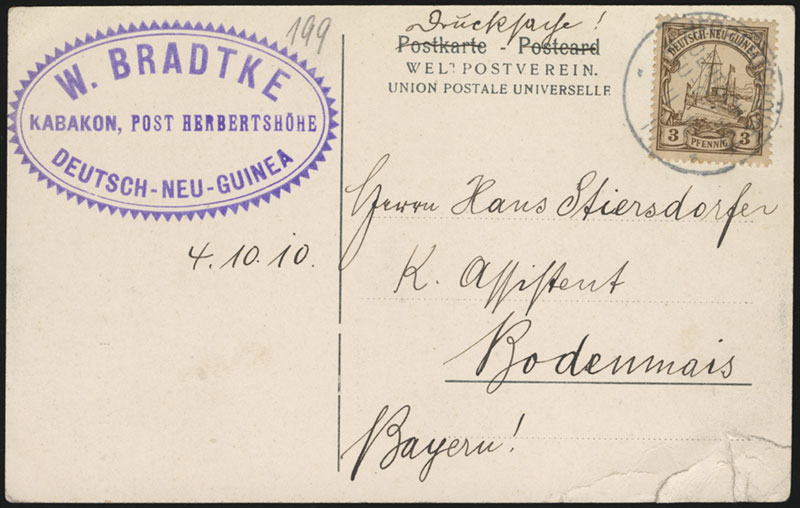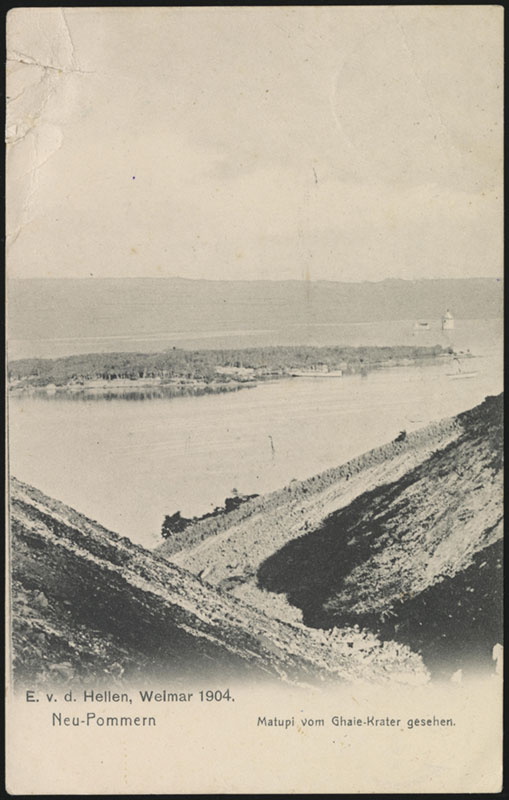Postcard of a Coconut Nut From Deutsch-Neuguinea
Oct 27, 2023 20:20:53 GMT -5
kacyds, Gordon Lee, and 3 more like this
Post by PostmasterGS on Oct 27, 2023 20:20:53 GMT -5
Received an unusual one today. Allow me to introduce you to August Engelhardt – author, nudist, sun-cultist, and cocoivore.
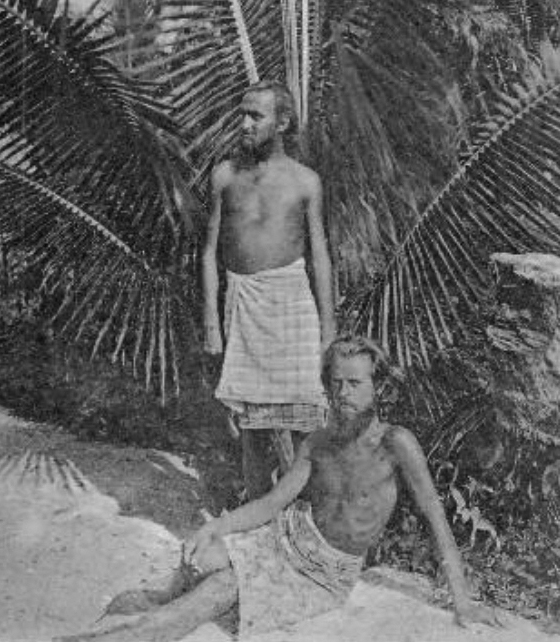
August Engelhardt (standing)
August Engelhardt was born in Nürnberg, Germany, on 27 November 1875. He studied the sciences, and took a keen interest in health and diet. In 1899, he joined an association for "wild living" in Germany, living in nature and practicing vegetarianism and nudism.
This didn't last long, as the association ran into legal troubles related to the nudism. Engelhardt began looking for a more remote location in which he could live in any manner he chose, and in September 1902, he arrived in Deutsch-Neuguinea (German New Guinea).
Being a wealthy man, he quickly purchased a 75-hectare coconut and banana plantation on Kabakon Island (now Kaka Kon Island). He was initially the only white man on the island – the other occupants were 40 Melanesians. He built a 3-room hut, gave up wearing all clothing, and began a vegetarian diet of mostly coconuts. He theorized that the sun was the giver of life, and that since the coconut grew nearest to the sun, it must be the perfect food – a view known as cocoivorism. After getting an ulcer on his leg, he began convinced that the other tropical fruits were the cause, and adopted a diet of only coconuts.
Rather than live alone, he started sending out advertisements and pamphlets in an effort to attract more settlers to the island and to his way of life. Shown here is a postcard that was sent by Engelhardt as printed matter, likely accompanying some of these materials. The only message is a date, 1 October 1908, and his signature "E". The back of the postcard shows that it was custom printed with a two drawings, made by Engelhardt, of his hut and of himself. These cards are exceptionally rare these days.
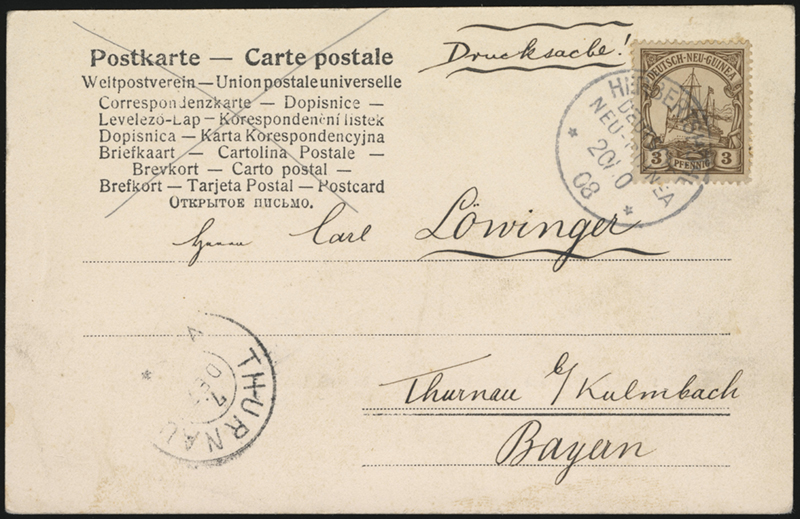
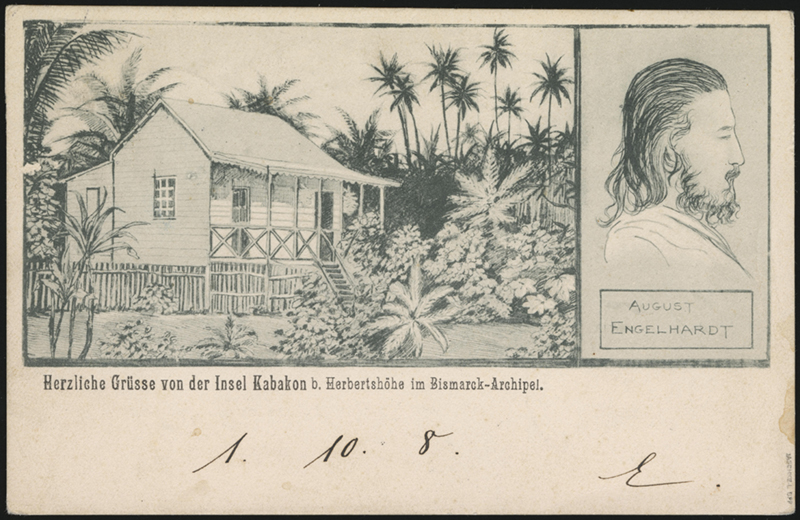
Dozens of settlers would come and go, with the height of the colony being 30 members in the first couple years.
Over the next decade, the colony would wither until Engelhardt was again the lone member. When the Australians invaded at the outbreak of WWI, he was interned at Rabaul for 3 weeks before the Australians decided he was crazy and set him free. He returned to Kabakon, where he continued to live his solitary, sun-worshipping, coconut-eating, nudist lifestyle until he passed in early May 1919.

August Engelhardt (standing)
August Engelhardt was born in Nürnberg, Germany, on 27 November 1875. He studied the sciences, and took a keen interest in health and diet. In 1899, he joined an association for "wild living" in Germany, living in nature and practicing vegetarianism and nudism.
This didn't last long, as the association ran into legal troubles related to the nudism. Engelhardt began looking for a more remote location in which he could live in any manner he chose, and in September 1902, he arrived in Deutsch-Neuguinea (German New Guinea).
Being a wealthy man, he quickly purchased a 75-hectare coconut and banana plantation on Kabakon Island (now Kaka Kon Island). He was initially the only white man on the island – the other occupants were 40 Melanesians. He built a 3-room hut, gave up wearing all clothing, and began a vegetarian diet of mostly coconuts. He theorized that the sun was the giver of life, and that since the coconut grew nearest to the sun, it must be the perfect food – a view known as cocoivorism. After getting an ulcer on his leg, he began convinced that the other tropical fruits were the cause, and adopted a diet of only coconuts.
Rather than live alone, he started sending out advertisements and pamphlets in an effort to attract more settlers to the island and to his way of life. Shown here is a postcard that was sent by Engelhardt as printed matter, likely accompanying some of these materials. The only message is a date, 1 October 1908, and his signature "E". The back of the postcard shows that it was custom printed with a two drawings, made by Engelhardt, of his hut and of himself. These cards are exceptionally rare these days.


Dozens of settlers would come and go, with the height of the colony being 30 members in the first couple years.
Over the next decade, the colony would wither until Engelhardt was again the lone member. When the Australians invaded at the outbreak of WWI, he was interned at Rabaul for 3 weeks before the Australians decided he was crazy and set him free. He returned to Kabakon, where he continued to live his solitary, sun-worshipping, coconut-eating, nudist lifestyle until he passed in early May 1919.





